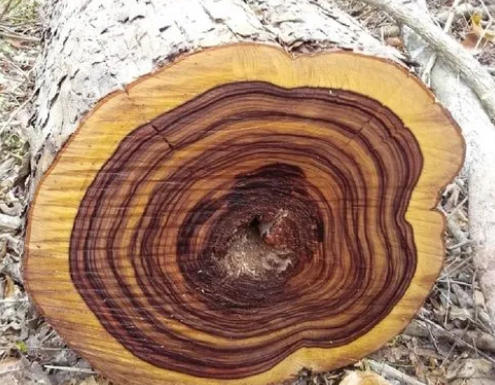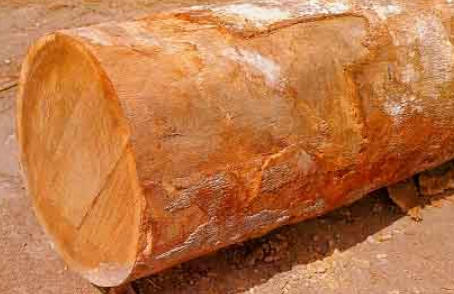Views: 222 Author: Rebecca Publish Time: 2025-10-15 Origin: Site











Content Menu
>> Premium Choice for Durability and Appearance
>> Installation and Finishing Techniques
● Jatoba Wood in Furniture and Cabinetry
>> Performance and Workability
● Decking, Outdoor Use, and Architecture
● Kitchenware and Culinary Use
● Millwork, Trim, and Decorative Elements
● Structural, Industrial, and Specialty Uses
● Environmental and Sustainability Concerns
● Best Practices: Working With Jatoba
● Maintenance and Care Guidelines
● Advantages and Downsides: A Balanced View
>> Jatoba's Most Notable Strengths
● Technical Specifications Table
● FAQs
>> 1. What makes Jatoba wood so durable?
>> 2. Does Jatoba wood require special care?
>> 3. Is Jatoba environmentally sustainable?
>> 4. How does Jatoba compare to oak or maple?
>> 5. Can Jatoba be used for outdoor furniture?
Jatoba wood—widely recognized in the lumber industry as Brazilian Cherry—stands out as one of the world's premier tropical hardwoods. Celebrated for its remarkable hardness, vivid reddish-brown color, and impressive durability, Jatoba is highly favored for luxury flooring, fine cabinetry, woodworking, and specialized structural applications. The wood not only delivers stunning aesthetics but also exceptional performance, making it a sought-after choice for demanding settings where style and longevity are equally essential.[1][5]
This comprehensive guide explores Jatoba wood's physical profile, core uses, strengths and challenges, industrial applications, ecological considerations, and best practices for working and maintaining this enduring material.

Jatoba, scientifically known as *Hymenaea courbaril*, thrives throughout Central and South America, from southern Mexico and the Caribbean to Brazil and Peru. Trees often reach heights of 30–40 meters (100–130 feet), producing long, straight boles suitable for large-dimension lumber. The wood's defining features—its extreme density and distinctive color—contribute to its widespread popularity among architects and woodworkers.
- Color: Heartwood ranges from salmon orange-brown to deep reddish-brown, often punctuated by darker streaks. Color deepens significantly with exposure to light, creating a rich patina over time (sapwood is pale gray-yellow and clearly separated).[7][1]
- Texture: Medium to coarse, interlocked grain, providing good natural luster and a visually interesting surface.[1]
- Density: Averaging 910–960 kg/m³ (57–60 lb/ft⊃3;), among the densest commercial hardwoods.[6]
- Hardness: Janka rating between 2,350–2,690 lbf, nearly twice that of red oak. This ranks it among the hardest flooring and decking woods available.[2][5][6]
- Strength: Modulus of Rupture (MOR) of 18,000–20,000 psi, and Modulus of Elasticity (MOE) up to 2,300,000 psi, making it ideal for bending forces and load-bearing projects.[6]
- Shrinkage: Moderate: radial 4.5–6%, tangential 8.5–10%, volumetric 11–12.7%.[5][7][6]
- Durability: Rated Class 1 for decay resistance. Highly resistant to rot, fungi, termites, and insect attack.[3][1]
Jatoba's extraordinary density makes it a top-tier hardwood flooring option that withstands decades of foot traffic. Favored in both commercial and luxury residential designs, Jatoba flooring exudes warmth, elegance, and a sense of permanence. In high-traffic spaces such as hotels, museums, and busy households, its surface resists scuffs, dents, and scratches far better than softer hardwoods.[5][7]
Installing Jatoba flooring requires sharp, carbide-tipped tools and precise planning to manage its density and interlocking grain. Pre-drilling is essential for nailing or fastening to prevent splitting and ease installation. Once finished, Jatoba floors take on a deep, glassy shine with polyurethane or oil-based finishes that highlight the wood's radiant color variation.
Key benefits:
- Long-lasting surface with minimal wear
- Deep red and golden tones that mature over time
- Robust against moisture and temperature swings
Furniture makers and custom cabinet shops choose Jatoba for its stunning visual character and enduring strength. The fine-to-medium texture and naturally lustrous finish allow for intricate detailing and crisp edges, making it ideal for heirloom-quality furniture, custom cabinetry, built-in shelving, dining sets, and premium office desks.[7][6]
- Strength: Superior load-bearing capacity supports heavy and high-use furniture.
- Aesthetics: Rich, reddish hues create eye-catching centerpieces.
- Workability: While hard on tools, with patience and proper equipment, Jatoba sands to a mirror finish and holds up to intricate joinery.
Cabinetry and furniture constructed from Jatoba will often outlast their counterparts made from softer or less durable species, retaining their brilliance for years with only routine care.
Jatoba's rot resistance, strength, and stability position it as a versatile choice for decking, outdoor stairs, and garden structures. Its minimal expansion and contraction, especially with air drying, make it suitable for diverse climates. When properly sealed against UV exposure, it outperforms many other tropical hardwoods in exterior settings.[3][5]
Common outdoor applications include:
- Residential and commercial decks
- Pergolas and arbor structures
- Exterior wall cladding and siding
- Outdoor staircases and benches
To preserve the wood's deep hues and prevent graying, apply UV-resistant finishes every 1–2 years. Outdoor Jatoba can last 20–30 years in public and private installations with minimal upkeep.[3]
Jatoba excels in the kitchen, especially for cutting boards, butcher blocks, and utensils. Its hard, dense grain resists knife marks and bacterial buildup, creating sanitary and visually pleasing kitchenware. Though its hardness can dull kitchen knives quickly, careful maintenance of blades mitigates this issue.
Advantages:
- Low porosity for superior hygiene
- Natural resistance to water and bacterial growth
- Striking visual appeal for presentation boards

Jatoba's resilience and polishability make it a staple in architectural millwork and custom trim. Its rich coloration and stable performance suit fine moldings, railings, banisters, and window/door frames, bringing a sense of luxury into interior environments.
Additional applications:
- Custom baseboards and casings
- High-impact wall paneling and accent walls
- Decorative balustrades and stair risers
With a natural luster and the ability to darken into a rich patina, Jatoba trim integrates seamlessly into both classic and modern designs.
Jatoba isn't reserved exclusively for beauty—it's equally at home in heavy-duty and industrial roles. Its high modulus of rupture (up to 20,000 psi) and toughness facilitate use in:
- Structural beams and supports
- Tool and hammer handles (outperforming hickory for shock resistance)
- Countertops and industrial work surfaces
- Sports equipment (gym floors, baseball bats)
- Select musical instruments (such as drum shells and fingerboards)
Large, well-formed boles from mature Jatoba trees facilitate the production of wide, solid planks for unique architectural and technical needs.[4]
Ecologically responsible harvesting is critical, given Jatoba's slow growth and the challenges of tropical forestry. Look for FSC or PEFC certifications to ensure the wood is sourced per rigorous environmental guidelines.
- Controlled logging methods—including selective “health cuts” and extended regrowth periods—are practiced by credible mills to maintain forest health.[3]
- Traceability and transparent supply chains help to avoid illegal logging and ecosystem disruption.
- Opting for reclaimed or certified Jatoba aids conservation efforts.
When properly managed, Jatoba harvesting supports not only rainforest preservation but also local economies and biodiversity.
While the density and interlocking grain present challenges, experienced craftsmen find Jatoba highly rewarding. Techniques for best results:
- Sharp carbide tools: Essential to reduce burn and blade dulling.
- Proper pre-drilling: Prevents end-checking and screw breakage.
- Slow, steady machining: To avoid tear-out and splintering, especially against the grain.
- Effective dust collection: Fine dust can cause skin irritation; work in ventilated spaces.
- Finishing: Sand up to at least 220 grit and use penetrating oils/polyurethane for lasting luster.
Steam bending is feasible—Jatoba performs comparably to white oak in bending applications.[7]
Due to its stability and density, Jatoba is simple to maintain:
- Flooring/furniture: Use neutral pH cleaners, avoid wet mopping, and keep indoor humidity stable (ideally 35–55%).
- Decks/exteriors: Clean with soap and water, avoid standing water, and reapply UV-protective finishes every 1–2 years.
- General: Avoid direct, harsh sunlight to minimize excessive darkening.
Routine care preserves both aesthetic and functional longevity for generations to come.
- Superior hardness and wear resistance
- Dramatic, evolving color and grain
- Natural resistance to insects and decay
- Multi-functional for indoor and outdoor use
- Long service life, often 20–30+ years
- Heavy weight: Increases shipping and handling costs.
- Tool wear: Rapidly dulls cutting edges.
- Color change: Sun exposure accelerates darkening and, if untreated, surface graying outdoors.
- Difficult to nail or screw without pre-drilling
Professionals and hobbyists agree: With skillful handling, Jatoba offers unmatched rewards for luxury builds and functional installations alike.
| Property | Value/Description |
|---|---|
| Density | 910–960 kg/m³ |
| Janka Hardness | 2,350–2,690 lbf |
| Modulus of Rupture | 18,000–20,000 psi |
| Modulus of Elasticity | Up to 2,300,000 psi |
| Radial Shrinkage | 4.5–6% |
| Tangential Shrinkage | 8.5–10% |
| Durability Class | 1 (resistant to decay) |
| Natural Luster | High |
| Suitable Applications | Flooring, decking, furniture, millwork, kitchenware, structural beams |
| Sustainability Option | FSC/PEFC certified available |
Jatoba wood seamlessly combines mesmerizing beauty, industrial-level strength, and environmental resilience. As a preferred material for both luxury interiors and challenging outdoor projects, it offers an unbeatable combination of style and substance. While its weight and hardness pose challenges, skilled craftsmanship and careful design unlock its extraordinary potential for generations of lasting beauty. Choosing certified Jatoba ensures that each project supports not only artful construction but also responsible forest stewardship.

Jatoba's remarkable density (Janka 2,350–2,690 lbf) and complex grain structure make it highly resilient to wear, moisture, insects, and decay, which is why it's so commonly chosen where longevity is critical.
Yes. For interior installations, maintain stable humidity, use mild cleaners, and refinish periodically. For exteriors, regular cleaning and application of UV-protective finishes are key to preserving color and resisting weathering.
When responsibly harvested, Jatoba can be a sustainable choice. Opt for products carrying FSC/PEFC certification and be sure your supplier practices traceable, controlled logging to help preserve rainforest ecosystems.
Jatoba is almost twice as hard as European oak and significantly denser than maple, making it extraordinarily resistant to dents and wear—though it is also heavier and a bit more difficult to machine.
Absolutely. Jatoba's natural resistance to decay and insects, coupled with routine oiling or sealing, make it ideal for outdoor benches, decks, and structures—just ensure it's maintained to prevent surface degradation.
[1](https://www.wood-database.com/jatoba/)
[2](https://www.novausawood.com/brazilian-cherry-jatoba-hardwood-lumber)
[3](https://www.mmcite.com/us/jatoba-fsc-certified-tropical-hardwood)
[4](https://izabalwood.com/timber-species/jatoba/)
[5](https://www.mcilvain.com/jatoba-wood/)
[6](https://woodthingamajigs.com/blogs/wood-species/jatoba)
[7](https://www.newmanlumber.com/jatoba)
[8](https://elementalhardwoods.com/type-of-wood/jatoba-brazilian-cherry/)